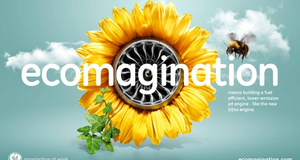Green Alliances: Collaboration Between Businesses and Environmental Advocacy Organizations
By
2012, Vol. 4 No. 07 | pg. 2/2 | « The successful McDonald’s- Environmental Defense Fund partnership arose in 1990. At the time, McDonald’s, a multimillion dollar fast food restaurant with over 11 000 restaurants worldwide was the single largest user of polystyrene (Livesey, 1999). To avoid being targeted, it launched a 100 million dollar program entitled “McRecycle” to purchase and use recycling material (Livesey, 1999). Despite this effort, with its inadequate waste management strategy and overconsumption, it appeared on the radar quickly, soon to be saved by Environmental Defense Fund. This environmental organization started out in 1967 initially against the use of DDT and grew to become a multimillion dollar organization with countless of scientists, economists, lawyers and over 200 000 members (Livesey, 1999). The role of Environmental Defense Fund in the alliance was to overview McDonald’s waste management strategy and help employ environmentally friendly alternatives. On October 2, after two months into the union, McDonald’s gave up the use of polystyrene. In response, the plastic companies launched advertising campaigns for plastics in the next month whose campaigns were defeated by Environmental Defense Fund’s expert research panel (Livesey, 1999). By April 1991, Environmental Defense Fund proposed a 42 step plan to incorporate environmentally friendly waste management techniques in the company (Livesey, 1999). Both partners walked away with a feeling of satisfaction, having accomplished their goals. Using the criteria proposed by Stafford, Polonksy and Hartman (2000), the effectiveness of the strategic bridgers is assessed which defines the core of green alliances. The green alliance between Loblaw and Pollution Probe failed primarily because Pollution Probe was not an effective strategic bridger. Although the objectives of the partnership were clear- Pollution Probe endorsed Loblaw products for money as well as increasing public awareness of environmental issues- internal strife destroyed their credibility. Westley and Vredenburg point out that the decision to endorse Loblaw products was agreed upon secretly and plunged upon the hesitant, angry staff (1991). Furthermore although compromise in an alliance is beneficial, assertiveness is crucial to retain one’s impartiality. Pollution Probe, under Isaacs Collins was pulled into agreeing to endorse the products and Loblaw refused to listen to ideas of green products proposed by Pollution Probe (Westley & Vredenburg, 1991). Without internal support and a hasty decision, Pollution Probe could not cope up with external threats. When its credibility was attacked by Greenpeace, Isaacs Collins resigned failing to defend its position. With his resignation, turmoil rose loosing determination to pursue the goal of endorsing Loblaw products for the betterment of the environment. Due to its failing to play the role of an effective strategic bridger, the alliance broke apart. The green alliance between Foron and Greenpeace was considered to be partially successful because although Greenpeace was an effective bridger, Foron ended up in bankruptcy. The objective was clear as Greenpeace endorsed the Clean Cooler built by Foron. Having a strong, united internal support group with the added support of thousands of supporters, Greenpeace was the right partner for Foron. In terms of compromise, Greenpeace didn’t have to because Foron accepted its funding to build the Clean Cooler in return for endorsement. Because of its member support, credibility and expert knowledge in environmental issues, Greenpeace was able to cope with all the threats. When Treuhand threatened to close Foron before the press conference, Greenpeace defied the authority and eliminated the threat, going ahead with the conference supporting Green freeze technology. Furthermore when German chemical companies attacked the Clean Cooler, Greenpeace scientists researched its efficiency and provided evidence for its safety.As Greenpeace coped with these threats, it continually increased its credibility as a nongovernmental environmental organization (Stafford, Polonsky, & Hartman, 2000). Lastly in pursuit of its goal, it launched a worldwide campaign to promote Green freeze, thus fulfilling its role as an effective strategic builder. However, was the green alliance successful? The answer depends on how we define the success of a green alliance. If we define a green alliance to be successful in that both of the partners in the alliance reach their goal, then we can define this alliance to be partially successful because Foron ended up in bankruptcy. However Greenpeace is not blameworthy of the fact that Foron did not have financial stability in the market. Greenpeace gave it a “boost” in the market or an incentive to promote Green freeze and then moved on in pursuit of its larger goal while Foron fell flat. However since it is a green alliance, the green objective meaning the lowering of the use of chlorofluorocarbons by switching to Green freeze was reached industry wide. In accomplishing this goal, the green alliance was indeed successful. Finally, in the green alliance between McDonald’s and Environmental Defense Fund, the partnership resulted in success. The agenda was clear: to introduce a waste management strategy for McDonald’s in order to reduce its ecological footprint. Like Greenpeace, Environmental Defense Fund enjoyed larger membership support with a unified internal structure. Because it had a clear objective and was assertive, after three months into the alliance, McDonald’s gave up the use of polystyrene. Supported by scientific research and a panel of expert environmentalists, it was able to cope with external pressure when plastic companies launched their advertising campaign. In the end, Environmental Defense Fund succeeded in reducing McDonald’s waste and also imprinting an environmental action plan in its infrastructure to promote long term changes. From insight into these three cases, it is important to highlight that integral to a green alliance is the role of the strategic bridger or the environmental organization who strives to tie the business world and environmental awareness together. Day by day, the state of the planet worsens as industries dump chemicals into lakes, puke fumes into the air and bury wastes into the soil, thus day by day the pressure on environmental organizations to act as effective strategic bridgers increases. Although businesses may attach themselves to environmental organizations to gain endorsements for products or clean up their image, it is important for the environmental organizations to take initiative in bringing the issues to the table and making sure the goals are reached. In the Foron-Greenpeace case, Greenpeace took the initiative to promote Green freeze and approached Foron to get the job done. In the McDonald’s- Environmental Defense Fund case, Environmental Defense Fund sought to clean up McDonald’s mess and thus approached it to come up with a remediation plan. In contrast, in the Loblaw- Pollution Probe alliance, Pollution Probe played a passive role. Although it did endorse the green products, it did not suggest ways of improving the company’s ecological footprint or making other areas green, thus losing its credibility in the end. As defined by Stafford, Polonksy and Hartman (2000) environmental organizations playing the role of strategic bridgers must propose a clear agenda, have concrete internal support, be flexible and able to compromise with their partner’s demands, be able to cope with external threats and have the determination to pursue the outlined goal. Having a clear agenda means that the environmental organization understands the objectives of the alliance. Concrete internal support, flexibility and being able to cope with external threats go hand in hand. The example of Pollution Probe highlights this because due to a lack of internal support and hasty decisions, it lost its credibility. As its identity deteriorated in the eyes of the public, it could not cope with external threats such as the Greenpeace objection to its promotion of the Loblaw fertilizer as a green product. Lastly, part of having the determination to pursue the goal is to act in a non-threatening but assertive way. Livesey argues that despite green alliances shunning the old “command and control” approach taken by environmental organizations, remnants of it still exist because there still needs to be some degree of pressure applied to firms to reach the goal (1999). T his is evident in the Foron-Greenpeace and McDonald’s-Environmental Defense Fund cases as environmental organizations enjoyed huge support from the media and public and thus were able to pressure their partners to accept their goals. In the Foron- Greenpeace case, because Foron was a vulnerable business in the first place, Greenpeace didn’t have to apply force to comply with its objectives. However in the McDonald’s- Environmental Defense Fund case, Environmental Defense Fund did pressure McDonald’s to give up using polystyrene to bring action. Thus the responsibility primarily lies on the shoulders of the environmental organization. Due to the effectiveness of green alliances in bringing changes in the behaviors of businesses and developing greater environmental awareness in the general public, it is important for governments to pitch in. For one, I propose that governments build 'Big Brother' programs to foster new green alliances. In these programs, businesses would be provided incentives to build green alliances with environmental organizations while environmental organizations obtain leverage to work with businesses to come up with practical and economical solutions to key environmental problems. To aid businesses of diverse backgrounds, the environmental organization must take initiative, establish its credibility, and play an active role in green alliances. Finally, it is crucial to understand that businesses and environmental organizations cannot be merged into one entity because each pursues distinct and often conflicting goals. Yet, as green alliances become more common, the gap between these goals can be narrowed to the benefit of both economic and environmental pursuits. ReferencesStafford, E. R., Polonsky, M.J., & Hartman, C.L. (2000). Environmental NGO- business collaboration and strategic bridging: a case analysis of the Greenpeace-Foron Alliance. Business Strategy and the Environment, 9(2), 122-135. Westley F., & Vredenburg, H. (1991). Strategic bridging: the collaboration between environmentalists and business in the marketing of green products. Journal of Applied Behavioral Science, 27(1), 65-90. Hartman, C. L., & Stafford, E.R. (1997). Green alliances: building new business with environmental groups. Long Range Planning, 30(2), 184-196. Livesey, S. M. (1999). McDonald’s and the Environmental Defense Fund: a case study of a green alliance. The Journal of Business Communication, 36(1), 5-39. Mendleson, N., & Polonsky, M.J. (1995). Using strategic alliances to develop credible green marketing. Journal of Consumer Marketing, 12(2), 4 -19. Azzone, G., & Bertele, U. (1994). Exploiting green strategies for competitive advantage. Long Range Planning 27(6), 69-81. Gallarotti, C. M. (1995). It pays to be green: the managerial incentive and environmentally sound strategies. Columbia Journal of World Business, 30(4), 38-57. Suggested Reading from Inquiries Journal
Inquiries Journal provides undergraduate and graduate students around the world a platform for the wide dissemination of academic work over a range of core disciplines. Representing the work of students from hundreds of institutions around the globe, Inquiries Journal's large database of academic articles is completely free. Learn more | Blog | Submit Latest in Environmental Studies |


















